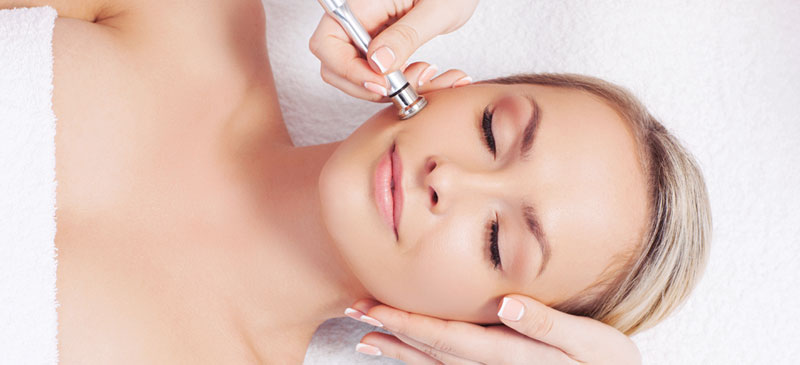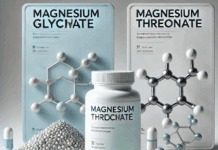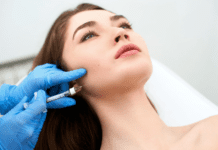Benefits and Risks of This Skin Procedure
Microdermabrasion is a popular skin treatment many people choose to improve their appearance. You’re in the right place if you’ve been wondering about this procedure. This article will explain what microdermabrasion is, how it works, its benefits, potential risks, and what to expect during and after treatment.
What Exactly Is Microdermabrasion?
Microdermabrasion is a minimally invasive skin resurfacing procedure that removes the outer layer of dead skin cells1. It’s a gentle exfoliation technique that reveals healthier skin beneath1. The treatment uses tiny crystals or a diamond-tipped wand to exfoliate the skin’s surface1.
Unlike more aggressive treatments, microdermabrasion is considered a gentle approach to skin rejuvenation1. It was introduced in 1985 as an alternative to chemical peels and traditional dermabrasion, which require longer recovery times1.
How Does Microdermabrasion Work?
During a microdermabrasion treatment, a wand delivers a fine jet of abrasive crystals over the skin5. These crystals work to remove dead skin cells and dirt from the surface5. A vacuum action then removes both the crystals and skin debris5.
This dual action resurfaces the skin and stimulates blood flow, encouraging the skin to rejuvenate itself5. The process also stimulates collagen and elastin production, essential for maintaining youthful, elastic skin5.
The Benefits of Microdermabrasion
Improved Skin Texture and Tone
One of the primary benefits of microdermabrasion is the improvement in skin texture and tone13. By removing the outer layer of dead skin cells, the treatment reveals a smoother, more even complexion13. Regular sessions can help maintain clear and smooth skin5.
Reduction in Fine Lines and Wrinkles
Microdermabrasion can enhance the appearance of fine lines and wrinkles1. The stimulation of collagen production helps to keep the skin firm and plump, reducing the visibility of these signs of aging13.
Treatment for Acne Scars and Blemishes
Microdermabrasion can be beneficial for those dealing with acne scars. The treatment can improve the appearance of shallow acne scars by smoothing out the skin’s surface2. While it may not eliminate deeper scars, it can significantly improve the overall appearance of the skin2.
Enhanced Product Absorption
After microdermabrasion, your skin becomes more receptive to skincare products2. This increased permeability allows creams and serums to penetrate deeper into the skin, making them more effective2. This is particularly important for those treating skin conditions like acne2.
Reduced Pore Size
Microdermabrasion can help reduce the size of pores by unclogging them and improving circulation2. This can lead to a smoother, more refined skin texture.
Potential Risks and Side Effects
Common Side Effects
While microdermabrasion is generally safe, there are some common side effects to be aware of. These typically include temporary redness and mild swelling immediately after the procedure3. Most people find that these effects subside within a few hours to a couple of days2.
Some individuals may also experience slight skin sensitivity or tightness3. These sensations are usually mild and resolve quickly3.
Less Common Risks
In rare cases, microdermabrasion may lead to minor bruising, especially if the treatment is too aggressive or if your skin is particularly sensitive39. This bruising typically fades within a week3.
Very rarely, infection or scarring might occur, particularly if proper hygiene practices aren’t followed during the procedure3. However, these risks are minimal when the treatment is performed by a qualified professional3.
Who Should Avoid Microdermabrasion?
Not everyone is a good candidate for microdermabrasion. People with active skin infections, severe rosacea, eczema, or active acne should avoid this treatment as it can irritate these conditions13.
Those with melasma should also be cautious, as microdermabrasion might aggravate this condition and lead to darker spots3. Similarly, individuals with a history of herpes simplex virus should consult with their doctor before undergoing treatment3.
Preparing for a Microdermabrasion Treatment
Consultation with a Professional
Before getting microdermabrasion, it’s important to consult a qualified professional5. They will assess your skin type and history to determine if the treatment is right for you1. This step helps avoid complications and ensures safety during the procedure1.
Pre-Treatment Care
To prepare for microdermabrasion, you might need to pause certain skincare products, especially those containing retinoids or other strong ingredients3. Your provider will give you specific instructions based on your skin’s needs.
The Microdermabrasion Procedure
What to Expect During Treatment
A typical microdermabrasion session begins with cleansing the skin5. Then, the technician will use the microdermabrasion device on the targeted areas1. The device exfoliates while vacuuming up dead skin particles1.
Each session usually lasts about 30 minutes to an hour14. The depth of the treatment depends on the strength of crystal flow, the rate of movement of the handpiece against the skin, and the number of passes over the treatment area4.
Is Microdermabrasion Painful?
Most people find microdermabrasion to be a comfortable procedure5. You’ll feel a mild scratching sensation as the device moves across your skin, but it shouldn’t be painful5. The treatment is often described as relaxing and pampered5.
Post-Treatment Care and Recovery
Immediate Aftercare
After microdermabrasion, your skin may be slightly red and sensitive, similar to a mild sunburn13. This usually subsides within a few hours3. To minimize side effects, keep your skin hydrated with gentle moisturizers and use sunscreen for the first few weeks after treatment2.
Try to avoid using topical acne creams for at least 24 hours after microdermabrasion2. Your skin will be more sensitive and susceptible to irritation during this time.
Long-Term Care
For best results, follow your provider’s recommendations for skincare after treatment. This typically includes using gentle products and avoiding direct sun exposure9. Your skin will be more sensitive to the sun after microdermabrasion, so applying sunscreen is crucial9.
Microdermabrasion vs. Other Skin Treatments
Microdermabrasion vs. Microneedling
While both treatments aim to improve skin appearance, they work differently. Microdermabrasion targets the epidermis (outermost layer of skin) and is effective for treating superficial issues like dullness and minor acne scars1.
Microneedling, on the other hand, penetrates deeper into the dermis and can address more significant concerns such as deep acne scars or wrinkles1. It’s often more effective for collagen induction therapy, which leads to firmer and smoother skin1.
Frequency of Treatments
The number of microdermabrasion treatments needed varies depending on your skin concerns. Typically, a series of 6-8 treatments is recommended, spaced every 7-10 days5. For more problematic skin, your therapist might suggest up to 20 treatments5.
After completing the initial series, maintenance sessions every few months can help sustain the improvements13.
Is Microdermabrasion Right for You?
Microdermabrasion is suitable for most skin types, but it’s not for everyone. If you have sensitive skin, active acne, rosacea, eczema, or other inflammatory skin conditions, you should consult with a dermatologist before trying this treatment3.
The procedure is particularly beneficial for those looking to improve skin texture, reduce fine lines, or minimize the appearance of shallow acne scars13. It’s also a good option for people who want a quick refresh without significant downtime1.
Remember, while home microdermabrasion kits are available, they’re not as effective as professional treatments2. For best results, seek out a qualified professional who can tailor the treatment to your specific needs.
Microdermabrasion offers a safe, effective way to rejuvenate your skin with minimal risk and downtime. By understanding what to expect and following proper aftercare, you can enjoy smoother, brighter, and healthier-looking skin.
Have you tried microdermabrasion before? What was your experience like? If you’re considering this treatment, what specific skin concerns are you hoping to address?









